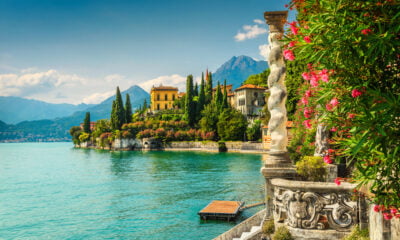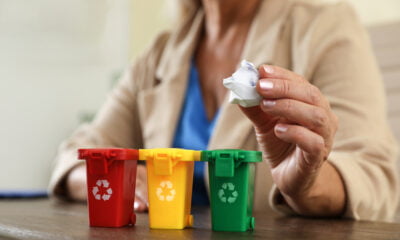

Environment
Environmental destruction in the Italian ‘triangle of death’
As a northern Italian, when I think about the south of my country I see good pizza and beautiful beaches. But such idyllic places are also home to one of the most serious environmental disasters in recent memory.
I am talking about a group of towns between the cities of Naples and Caserta, in Campania, southern Italy. This area is known – sadly – more for its criminal organisation named Camorra than it is for its natural and cultural beauty. It was recently described in local media as a place of devastation and death.
The area is nicknamed Terra dei Fuochi, or Land of Fires, and not because of its hot summer weather. Police have suspected criminal organisations of spilling, burying and burning toxic waste from the north of Italy and elsewhere in Europe since the early 2000s. Bosses from the so-called ‘eco-mafia’ are often being arrested for related crimes.
Because most of the illegal waste is burnt – especially during the waste management crisis of 2008 – the area was named Land of Fires. Needless to say, this reckless practice has had devastating consequences on the environment and the Italian people.
In 2003, environmental NGOs pointed out that many people in the region were being diagnosed with cancer – especially in an area around three towns now named the ‘triangle of death’. The region has the highest rate of liver, bladder and brain cancer in the whole of Italy. Shortly after, a study published on the medical journal the Lancet, called Italian “Triangle of death” linked to waste crisis, put forward the link between the high number of cancer patients and the illegal activity of waste disposal.
The waste – usually residue and chemicals from various industries, but also tyres and nuclear waste – is buried or burnt, releasing toxic substances like dioxin into the soil or the atmosphere. Sometimes, it is sent to African countries where it is buried, while on other occasions, it is thrown into the sea.
 In 2008, dioxin traces were found in one of the most famous Italian products: buffalo mozzarella. The news caused international panic. In the same year, the first arrests in relation to illegal dumping were made. A total of 20 people got caught dumping and burning toxic waste near the towns of Marigliano, Afragola and Arzano. A subsequent investigation revealed that often behind the activity were metals businesses, which burnt cables to recover copper which was then sold on.
In 2008, dioxin traces were found in one of the most famous Italian products: buffalo mozzarella. The news caused international panic. In the same year, the first arrests in relation to illegal dumping were made. A total of 20 people got caught dumping and burning toxic waste near the towns of Marigliano, Afragola and Arzano. A subsequent investigation revealed that often behind the activity were metals businesses, which burnt cables to recover copper which was then sold on.
Meanwhile only last year, a former member of the Camorra, Carmine Schiavone, told the press that the region was set to become an open-pit landfill site for chemical, toxic and nuclear waste. He revealed the location of some of the spills, giving an idea of just how widespread the phenomenon was.
Schiavone estimated the amount of toxic waste – including from nuclear – to be at least 10,000 tonnes, disseminated beneath roads and agricultural land.
Naples citizens have called on the government to act and stop the devastation. Their attempts have so far been in vain; mafia organisations are simply too powerful. People marched in Naples and Caserta to demand action, while other forms of protest and campaigning also started online many years ago (there is an interactive website where people can send alerts of ongoing fires and dumpings).
The Italian government recently approved new measures to forbid new fires, assess the extent of pollution and do health checks on citizens. However, many fear these policies will do nothing to solve the problem of illegal dumping.
Meanwhile elsewhere in the country, another study of people in Crotone, Calabria, said one in four families include someone with cancer. This was linked, again, to massive amounts of industrial toxic waste buried under buildings and schools. In fact, hundreds of students were found to have levels of cadmium, uranium and nickel in their blood, which were three or four times higher than normal.
Naples and the Italian south have become an international landfill for someone else’s garbage, with help from one of the richest and most powerful criminal organisations on the planet. The crisis that is going on in the Land of Fires is poisoning people, animals and the environment. The economy of a whole region is at risk of collapsing because of the toxic contamination of agricultural products.
Like in many scandals before it, people in Italy protest, talk shows mostly flirt with the issue and politicians argue about who is to blame. All the while, people are dying and the beauty and prosperity of an entire nation is being scarred. We can only hope the damage is not permanent.
Further reading:
UN: global crime conflicts with sustainable development
The mafia’s love-in with renewables
Investimenti responsabili: a glance at Italy’s responsible investment market
The love (and corruption) of money: troubling times at the Vatican Bank


 Environment10 months ago
Environment10 months agoAre Polymer Banknotes: an Eco-Friendly Trend or a Groundswell?

 Environment12 months ago
Environment12 months agoEco-Friendly Home Improvements: Top 7 Upgrades for 2025

 Features9 months ago
Features9 months agoEco-Friendly Cryptocurrencies: Sustainable Investment Choices

 Features11 months ago
Features11 months agoEco-Friendly Crypto Traders Must Find the Right Exchange





























